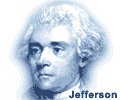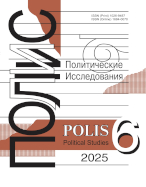The digital socio-political agenda:
theoretical model tested on the Russian case “Coronavirus-2020”
Timofeyeva L.N.,
The Russian Presidential Academy of National Economy and Public Administration, Moscow, Russia, timofeeva-lidiya@inbox.ru
elibrary_id: 77245 | ORCID: 0000-0001-7498-416X | RESEARCHER_ID: N-3818-2018
Ryabchenko N.A.,
Kuban State University, Krasnodar, Russia, rrrnatali@mail.ru
elibrary_id: 637940 | ORCID: 0000-0001-6980-2894 | RESEARCHER_ID: Q-8079-2016
Malysheva O.P.,
Kuban State University, Krasnodar, Russia, malisheva_83@mail.ru
elibrary_id: 891265 | ORCID: 0000-0001-8285-0508 | RESEARCHER_ID: E-8066-2018
Gnedash A.A.,
Kuban State University, Krasnodar, Russia, anna_gnedash@inbox.ru
elibrary_id: 298533 | ORCID: 0000-0002-3516-107X | RESEARCHER_ID: S-1350-2016
Article received: 2022.04.15. Accepted: 2022.05.21
DOI: 10.17976/jpps/2022.05.03
Timofeyeva L.N., Ryabchenko N.A., Malysheva O.P., Gnedash A.A. The digital socio-political agenda: theoretical model tested on the Russian case “Coronavirus-2020”. – Polis. Political Studies. 2022. No. 5. https://doi.org/10.17976/jpps/2022.05.03
The reported study was funded by RFBR and EISR according to the research project No 21-011-31826 “Deliberative practice of interaction of parliamentary parties with the electorate: structural-communicative analysis” (2021).
This article develops the concept introduced in “The digital socio-political agenda and its conceptualization within the new media ecology framework (Polis. Political Studies. 2022. No. 2). The model of the digital socio-political agenda is described through two dimensions (“Official discourse” and “Network discourse”), which result through their constant interaction in the production of a new digital socio-political agenda, in which the state and traditional media are no longer the undisputed leaders. The article presents the results of the testing of the theoretical model of the digital socio-political agenda developed by the authors on the empirical data of the Coronavirus case on social networks Twitter and Facebook* and in all publications of the largest news agencies of the Russian Federation in the period from March 18 to September 19, 2020. The resulting datasets (1 million 900 thousand messages for the keyword “coronavirus” (and its variations) and 760 thousand users who used the words/phrases “coronavirus” in these social networks; 10 thousand publications by RIA Novosti, TASS, “Interfax” for the keyword “coronavirus”) were subjected to network, relational and linguo-discursive analysis. The authors come to the conclusion that the factors influencing the sustainability and effectiveness of the digital socio-political agenda are: firstly, the presence or absence of polarization of the “Users” network; secondly, mutual embedding, penetration or dominance of pro-government and opposition discourses; thirdly, the value of the weight of interlevel interactions between the “Official discourse” dimension and the “Network discourse” dimension. During the testing of the model, the following strategies for the formation of discursive fields in the digital socio-political agenda, typical for pro-government and opposition structures, as well as for online influencers, were identified and detailed: a strategy for involving new users; pragmatic modeling strategy; a strategy of whipping up panic and forming a negative attitude towards official power (typical of opposition structures); a strategy of discursive hibernation; a strategy of discursive diffusion; an advance strategy (typical of pro-government structures). The presence of multidirectional vectors in the digital socio-political agenda, especially in crisis and emergency situations, does not allow stabilizing the socio-political system and mobilizing the civilian population for constructive socio-political practices both online and offline.
References
McCombs, M.E., & Shaw, D.L. (1972). The agenda-setting function of mass media. Public Opinion Quarterly, 36(2), 176-187. https://dx.doi.org/10.1086/267990
Kvaskova, L.V. (2016). Disfemization of speech as a communicative tactic in discourse. Lecturer XXI century, 3, 352-357. (In Russ.)
Ryabchenko, N.A., Malysheva, O.P., Katermina, V.V., & Gnedash, A.A. (2021). Communication model “speaker – listener” in the context of digitalization of the linguistic turn: experience of network and linguodiscursive analysis of YouTube content. Political Linguistics, 1, 81-94. (In Russ.)
Timofeeva, L.N., Ryabchenko, N.A., Malysheva, O.P., & Gnedash, A.A. (2022). Digital socio-political agenda and its conceptualization within the new media ecology framework. Polis. Political Studies, 2, 37-51 (In Russ.) https://doi.org/10.17976/jpps/2022.02.04
See also:
Timofeyeva L.N., Ryabchenko N.A., Malysheva O.P., Gnedash A.A.,
The digital socio-political agenda and its conceptualization within the new media ecology framework. – Polis. Political Studies. 2022. No2
Petrov S.I.,
STATE GOVERNANCE AND POLITICAL NETWORKS. – Polis. Political Studies. 2014. No4
Akhremenko A.S., Stukal D.K., Petrov A.P.,
Network vs Message in Protest Diffusion on Social Media: Theoretical and Data Analytics Perspectives. – Polis. Political Studies. 2020. No2
Akhremenko A.S.,
Internet shutdown as a theoretical problem of political science, or what we do (not) understand about network protest mobilization. – Polis. Political Studies. 2024. No2
Kazantzev A.A.,
Three Scenarios of a “Coloured” Revolution in Russia (Modelling the Net Dynamics of the Russian Polity). – Polis. Political Studies. 2006. No1




.jpg)






 print
print
.jpg)
.jpg)